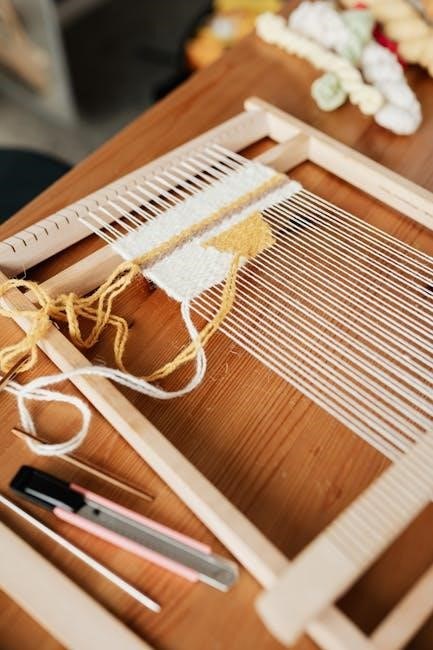Dometic Awning Manual: A Comprehensive Guide
This comprehensive guide provides practical instruction for the sequential operation of Dometic awnings. Learn about manual deployment, safety, and troubleshooting. Discover maintenance tips, component identification, and explore user guides. Access Dometic support for assistance with your RV awning needs.
Understanding Dometic Awning Models
Dometic offers diverse awning models, each designed for specific RVs and user needs. The classic Dometic 8500 manual awning provides a winning combination of style and longevity with its simple manual operation; This awning features die-cast parts, a heavy-duty torsion spring assembly, and self-lubricating bushings for reliable performance.
The Dometic 9000 awning is another popular choice, available with acrylic fabric and a metal weathershield. For power operation, the Dometic 9100 and 9200 series offer convenient push-button deployment and retraction. These power awnings come in various configurations, including models with LED lighting.
It’s important to understand the features and specifications of your particular Dometic awning model to ensure proper operation and maintenance. Consult your user manual or the Dometic website for detailed information on your awning type, including its dimensions, fabric type, and operating instructions.
Manual Operation of Dometic Awnings
Operating a Dometic manual awning is typically straightforward, but understanding the correct procedure is crucial for smooth operation and preventing damage. The Dometic 8500 manual awning offers a simple and reliable way to enjoy shaded comfort.
Begin by releasing the travel locks or latches that secure the awning arms in their stored position. Carefully extend the awning by pulling down on the pull strap or handle, guiding the fabric roller tube as it unrolls. Ensure the fabric unrolls evenly to prevent binding or tearing.
Once the awning is fully extended, adjust the support arms to your desired height and secure them in place. To retract the awning, release the support arms and gently roll the fabric back onto the roller tube, guiding it evenly. Secure the travel locks or latches to prevent the awning from accidentally deploying during travel. If malfunctions occur, contact a qualified Dometic service technician.
Safety Instructions for Dometic Awnings
Operating any awning requires adherence to safety guidelines to prevent injury or damage. Before operating your Dometic awning, carefully read and understand all safety instructions provided in the user manual. Always ensure the area around the awning is clear of people and obstacles before extending or retracting it.

Never operate the awning in windy conditions, as strong gusts can cause the awning to become unstable and potentially collapse. Water pooling on the awning fabric can also create a hazard, so be sure to tilt the awning to allow water to run off during heavy rain. Regularly inspect the awning components for wear or damage, and promptly repair or replace any faulty parts.
When retracting the awning, ensure the fabric is rolled up evenly to prevent it from unraveling during travel. Secure all latches and locks to prevent accidental deployment. If you are unsure about any aspect of operating or maintaining your Dometic awning, contact a qualified service technician for assistance.
Troubleshooting Common Issues
Even with proper care, Dometic awnings can sometimes experience operational issues. One common problem is difficulty extending or retracting the awning, often caused by a jammed roller tube or misaligned arms. Inspect the roller tube for any obstructions and ensure the arms are properly aligned and lubricated.
Another frequent concern is fabric damage, such as tears or mold growth. Small tears can often be repaired with awning repair tape, while mold can be removed with a mild soap and water solution. For extensive damage, fabric replacement might be necessary. A sagging awning can be due to loose hardware or a stretched torsion spring; tighten the hardware or consult a technician.
If the awning motor fails on power awnings, check the power supply and wiring connections. A blown fuse or faulty wiring can prevent the motor from operating. If these steps do not resolve the issue, contact a Dometic service center for professional assistance. Always consult the awning’s user manual for specific troubleshooting steps and safety precautions before attempting any repairs.

Dometic Awning Fabric Replacement Guide
Replacing your Dometic awning fabric is a straightforward process that can significantly extend the life of your awning. Before starting, ensure you have the correct replacement fabric for your awning model, along with necessary tools such as a flat-bladed screwdriver, pliers, and potentially a helper. Begin by carefully removing the old fabric. For added protection during the installation process, leave the old fabric on the work surface to protect the new fabric.
Next, detach the fabric from the roller tube and awning rail. This usually involves removing screws or sliding the fabric out of a groove. Once the old fabric is removed, slide the new fabric into the awning rail and then attach it to the roller tube. Ensure the fabric is properly aligned and tensioned to prevent sagging or uneven rolling. Secure all screws and fasteners tightly.
Finally, test the awning by extending and retracting it several times to ensure smooth operation. Adjust the fabric as needed to achieve the correct tension and alignment. If you encounter any difficulties, consult the Dometic service manual or seek assistance from a qualified service technician. This process ensures your awning looks and functions like new.
Maintenance and Care Tips
Proper maintenance and care are essential for prolonging the life and performance of your Dometic awning. Regular cleaning is crucial; use a mild soap and water solution to wash the fabric, removing dirt, debris, and mildew. Avoid harsh chemicals or abrasive cleaners, as these can damage the fabric and protective coatings. Allow the awning to air dry completely before retracting it to prevent mold and mildew growth;
Inspect the awning regularly for any signs of wear and tear, such as small tears, loose threads, or damaged hardware. Repair any minor issues promptly to prevent them from escalating into more significant problems. Lubricate moving parts, such as the awning arms and roller tube, with a silicone-based lubricant to ensure smooth operation. Check the tension of the awning fabric and adjust as needed to prevent sagging.
During periods of heavy rain or strong winds, retract the awning to prevent damage. Water pooling can cause the fabric to stretch or tear, while strong winds can bend or break the awning arms. Store the awning properly during the off-season by cleaning it thoroughly, allowing it to dry completely, and covering it with a protective awning cover. By following these maintenance and care tips, you can keep your Dometic awning in optimal condition for years to come.
Identifying Awning Components and Parts
Understanding the different components of your Dometic awning is essential for maintenance, troubleshooting, and repairs. Familiarize yourself with the awning fabric, typically a durable vinyl or acrylic material designed to withstand the elements. The fabric roller tube is the cylindrical component around which the awning fabric is wound. Awning arms provide support and extend the awning outwards, often featuring adjustable pitch for rain runoff.
The torsion assembly creates tension for smooth awning retraction. Identify the weathershield, a protective cover for the rolled-up awning fabric. Manual awnings include a crank handle for extending and retracting the awning, while power awnings have a motor and control switch. Other essential parts include the rafters, which provide additional support to the awning fabric, and the mounting brackets, which secure the awning to the RV.
Cam locks or latches secure the awning arms in place. Knowing these parts will help when ordering replacement parts. Consult your Dometic awning manual or parts diagram for a complete list of components specific to your model. Being able to name the components will also assist you in understanding instructions from service technicians.

Power Awning User Guide
This user guide provides instructions for operating your Dometic power awning. Before operating, inspect the awning for any visible damage or obstructions. Ensure the area around the awning is clear of people and objects. To extend the awning, locate the power switch, typically found inside the RV or on an exterior control panel. Press and hold the “extend” button until the awning is fully extended.
To retract the awning, press and hold the “retract” button until the awning is fully retracted and secured. Never leave the awning extended during high winds, heavy rain, or snow. Doing so could damage the awning and the RV. Many power awnings have a wind sensor that automatically retracts the awning in high winds.
Familiarize yourself with this feature. If the awning does not extend or retract, check the power supply and the fuse. If problems persist, contact a qualified technician. Regularly inspect the awning fabric for tears or damage. Keep the awning clean and free of debris. Consult your Dometic awning manual for model-specific instructions and safety precautions.
Manual Awning User Guide
This guide explains how to safely operate your Dometic manual awning. Before extending, ensure the area is clear of obstacles. Locate the awning’s pull strap or handle. Gently pull down and outwards to release the travel locks. Slowly extend the awning, using the pull strap or handle to control the speed. Be mindful of the awning’s weight and balance.
Once fully extended, secure the support arms. Some models have adjustable legs for uneven ground. When retracting, release the support arms. Use the pull strap or handle to carefully roll the awning back into its housing. Ensure the fabric rolls in evenly to prevent damage. Secure the travel locks to prevent accidental opening during travel.
Regularly inspect the awning fabric for wear. Clean with mild soap and water to prevent mildew. Lubricate moving parts as needed. If you encounter resistance, do not force it. Consult your Dometic manual or a qualified technician. Never leave the awning unattended in windy conditions. Following these steps ensures years of reliable use.
Accessing Dometic Service and Support
Dometic provides multiple avenues for accessing service and support for your awning. If your awning malfunctions, consult the troubleshooting section of your user manual first. Should the issue persist, locate a Dometic Service Center or a qualified service technician. Dometic’s website offers a comprehensive directory of authorized service providers near you.
The Dometic website also hosts a wealth of resources, including product manuals, FAQs, and technical data sheets. You can download these documents for detailed information about your specific awning model. For immediate assistance, Dometic’s customer support team is available via phone and email. Be prepared to provide your awning’s model number and a description of the problem.
Dometic also offers online service part searches. If you need to replace a damaged component, you can easily identify and order the correct part through their website. Regularly check Dometic’s website for service bulletins and technical updates. Staying informed ensures your awning operates smoothly and reliably. Remember to retain your warranty documentation for potential claims.
